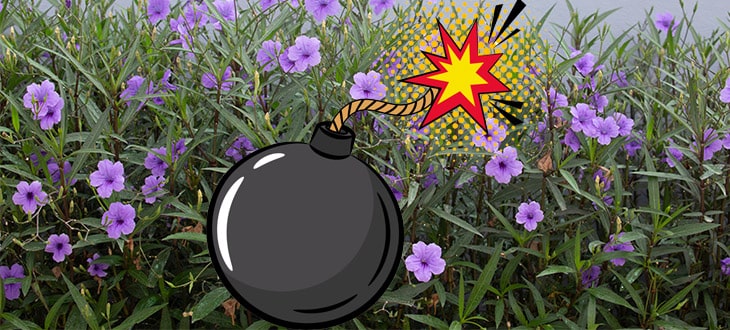10 Explosive Plants (Ballistic Seed Dispersal Mechanisms)
Did you know that some plants have an “explosive” way to scatter their seeds? Here is a list of 10 explosive plants that use ballistic seed dispersal.
When it comes to the perpetuation of species, not only humans and animals have shown amazing skills, but also plants. While some plants rely more on natural factors to spread their seeds, some species have built their own unique ways which ensure better reproduction.
Some of the seed dispersal methods are more efficient than others. Some plants may even combine several of them. However, the one that draws the most attention and that’s the most fun to watch is ballistic dispersal.
Ballistic seed dispersal (or ballochory) consists of the plant ejecting the seed(s) with a great force, similar to a small explosion. This process is also known as explosive dehiscence.
This event differs from one plant species to another and is more thrilling and fun to watch in some plants. While sometimes this can look like a light explosion and even be accompanied by a crackling sound, in other cases, you can only see the seeds being catapulted away from their pods.
Even though the term “ballistic” is used to describe this way of dispersing seeds, no explosive substance is involved in the process. The force that generates the so-called explosion results from the pressure that forms within the fruit cells when it dehydrates. The bursts are sometimes triggered by an external factor, such as water, wind, or a touch, but the process most of the time occurs by itself when the seeds pods get very dry.
Now that you know a few basic things about this process, let’s see some examples of explosive plants.
Contents
- 1. Sandbox Tree (Hura Crepitans)
- 2. Touch-Me-Not (Impatiens Capensis)
- 3. Cracker Plant (Ruellia Tuberosa)
- 4. Wood Sorrels (Oxalis)
- 5. Squirting Cucumber (Ecballium Elaterium)
- 6. Hairy Bittercress (Cardamine Hirsuta)
- 7. Honey Spurge (Euphorbia Mellifera)
- 8. Dwarf Mistletoes (Arceuthobium spp.)
- 9. Violets (Viola spp.)
- 10. Firecracker Flower (Crossandra infundibuliformis)
1. Sandbox Tree (Hura Crepitans)
Sandbox tree (Hura crepitans) is a large species of evergreen trees native to the tropical regions of America. It is also known as possumwood, monkey’s pistol, jabillo, monkey no-climb, monkey’s dinner bell, or the dynamite tree.
This tree species can grow up to 200 ft (60 m) high but does not only impresses by its size. Sandbox trees also contain highly toxic sap, and can be easily recognized by the many dark and pointed conical spines covering their trunks. However, these trees are especially known for their explosive fruits.
Sandbox trees produce pumpkin-shaped fruits that once they ripe will explode, catapulting parts of them and the seeds inside to great distances. Sources say that their seeds can even jump as much as 330 ft (100 meters) from the tree.
The fruits of these trees cause the most powerful explosions among the plants with ballistic seed dispersal.
2. Touch-Me-Not (Impatiens Capensis)
Touch-me-not (Impatiens capensis) is a genus of flowering plants that include more than 1,000 species. These are also commonly known as impatiens, jewelweed, snapweed, Himalayan balsam, and patience.

These flowers got their name “touch-me-not” for a good reason. More precisely, due to their explosive seed pods.
When being touched, the seed pods of Impatiens plants burst into tiny blasts. Their seeds are then scattered everywhere with impressive speed.
Because they usually grow near water, their seeds often end up in rivers and are transported to remote areas, creating new colonies. Due to their efficient reproduction, impatiens are considered invasive plants in many regions.
3. Cracker Plant (Ruellia Tuberosa)
The cracker plant (Ruellia tuberosa) is a small species of biennial flowering plants native to Central America but also found in several other regions of the world. It is also known as popping pod, minnieroot, sheep potato, duppy gun, snapdragon root, and fever root.
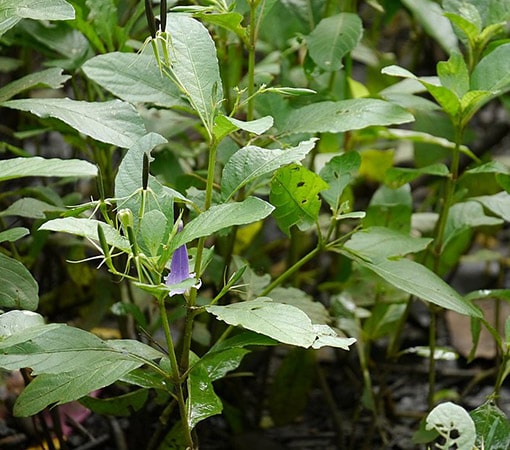
Ruellia tuberosa produces violet-colored flowers in the shape of funnels and long capsular fruits carrying approximately 20 seeds each.
The dry seed pods of this plant explode when getting in contact with water and seeds are dispersed away from the plant. These are often collected by children as they offer quite a fun show when they start popping one after another.
4. Wood Sorrels (Oxalis)
Wood sorrel (Oxalis) is a large genus of flowering plants that occurs throughout most regions of the world. There are more than 570 species of plants in the Oxalidaceae family and some species are commonly known as wood sorrels, false shamrocks, sourgrasses, or oxalises.
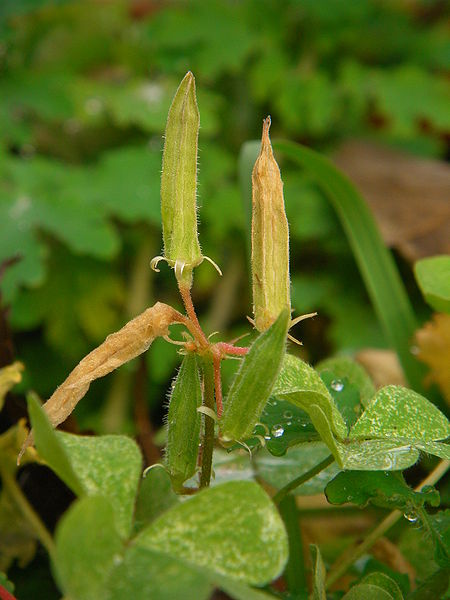
Two Oxalis species that are pretty popular and which do have explosive seed pods are Oxalis stricta (yellow woodsorrel) and Oxalis corniculata (creeping woodsorrel).
Chances are that you’ve already seen some of these plants growing in your garden, backyard, or lawn. They are generally considered weeds and due to their very efficient propagation system that uses a combination of ballistic seed distribution and underground rhizomes, they are in many regions regarded as invasive.
The seed capsules of these plants open explosively when touched and start throwing seeds in every direction. Experts say that the seeds can be launched up to 13 feet (4 meters) away from the plant.
5. Squirting Cucumber (Ecballium Elaterium)
Squirting cucumber (Ecballium elaterium) is a perennial flowering plant in the family Cucurbitaceae native to Europe, northern Africa, and temperate regions of Asia. It is also commonly known as exploding cucumber.
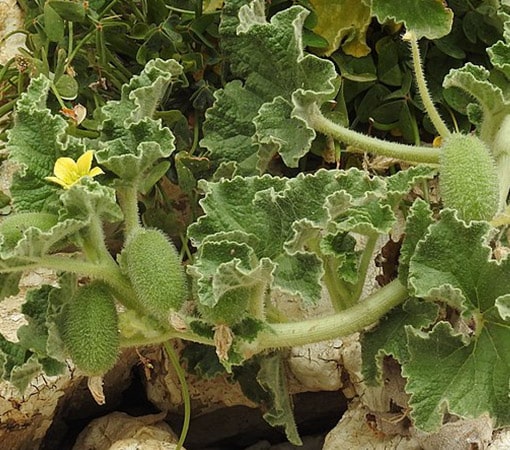
This plant is especially fascinating for its seed dispersal. Specifically, it produces cucumber-like fruits that when ripe and disturbed, propel a stream of sticky liquid containing its seeds.
Although it’s popularly called cucumber, this plant is poisonous. The liquid sprayed from the fruits can also cause skin irritation, and even blindness if gets into your eyes.
If you ever meet one of these plants and want to see a bit of “explosive action”, remember to always wear safety glasses.
6. Hairy Bittercress (Cardamine Hirsuta)
Hairy Bittercress (Cardamine Hirsuta) is an annual or biennial species of plant in the family Brassicaceae (mustard family) native to Eurasia but prevalent in many moist areas of the world. Other popular names for Cardamine hirsuta include shot weed, lamb’s cress, flick weed, land cress, spring cress, and hoary bitter cress.
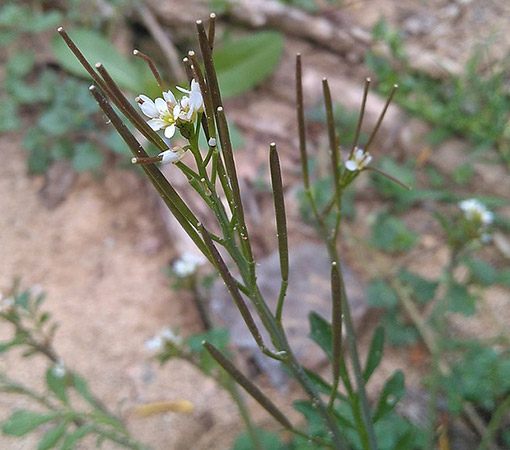
Like the other plants we talked about above, this also has an impressive method for seed dispersal. When the weather gets warmer, hairy bittercress grows stalks with tiny white flowers, followed by elongated seed capsules, called siliques.
Once the seed pods mature and something disturbs them, these burst explosively, throwing the seeds far away from the mother plant.
7. Honey Spurge (Euphorbia Mellifera)
Honey Spurge (Euphorbia Mellifera) is an evergreen shrub in the spurge family Euphorbiaceae.
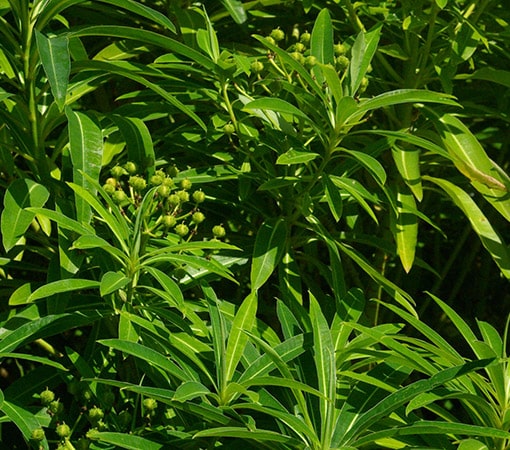
This plant is indigenous to Madeira and the Canary Islands but is also found in other parts of the world. Besides honey spurge, it is also commonly known as the canary spurge.
Euphorbia mellifera is mostly grown for its green foliage but also for its honey-scented flowers.
After the flowering period, the honey spurge forms the fruits. These are round capsules that when ripe become tiny bombs. When they explode, the seeds can be hurled away several meters from the plant.
8. Dwarf Mistletoes (Arceuthobium spp.)
Dwarf mistletoes (Arceuthobium spp.) is a genus of tiny parasitic plants that live on several species of conifers. They have few visible shoots, are leafless (some present scales), and most part of the plant lives under the bark of the host tree.
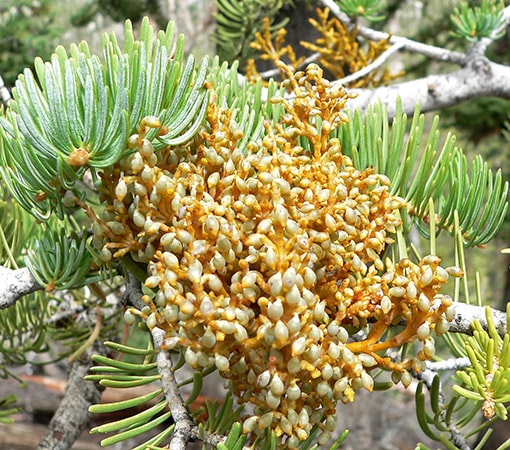
Dwarf mistletoe produces flowers and fruits. Its fruits have a spherical shape, are no more than 4 mm in size, and each carries one seed coated with a sticky substance.
Once the fruits reach maturity, or when something touches them, they burst open and explosively discharge the seeds inside at impressive speeds. A part of the seeds reach and stick to the neighboring trees, which thus become the host for the next generation of this parasitic plant. Birds also help the spread of dwarf mistletoes to more distant areas.
9. Violets (Viola spp.)
Violets (Viola spp.) is a large genus of flowering plants in the Violaceae family, which includes more than 1,000 different species. They are also generally known as garden pansies, pansies, and violets.

A considerable fraction of the viola species is grown in gardens as ornamental flowers. Some are annuals, while others are perennials.
Many species of violets disperse their seeds through explosive dehiscence. Once the violet seed pods are fully-developed and dry out from the sun, they crack open into three segments that sustain the seeds. As the seed stand is drying more, the seeds are compressed by the walls from both sides until they start popping out. They can be shot up to 16 ft (5 meters) away from the parent plant.
Once they reach the soil, the seeds are oftentimes spread even further from the plant by ants, a process called myrmecochory.
10. Firecracker Flower (Crossandra infundibuliformis)
Firecracker Flower (Crossandra infundibuliformis) is a flowering plant native to Sri Lanka and India. In many regions, it is a common houseplant.
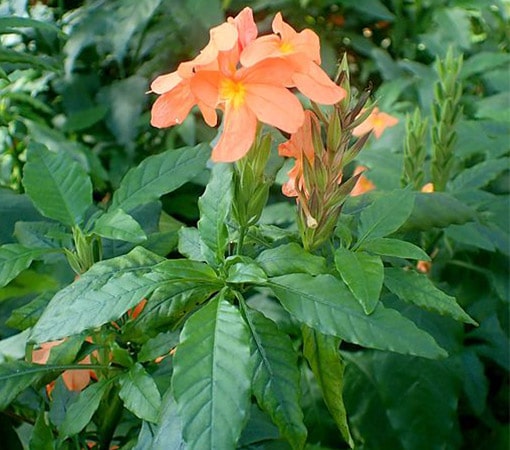
Crossandra infundibuliformis has got the name “firecracker flower” due to its seed pods which pop similar to firecrackers when getting in contact with water or other liquids. The seeds inside then scatter all over the place.
The fact that Crossandra infundibuliformis disperses its seeds during rains, increases the chances for them to germinate and thus give life to a new plant.
This plant’s seed dispersal method is very similar to the one of Ruellia tuberosa (cracker plant), which we’ve mentioned earlier in this list.
Final Word
Ballistic seed dispersal is one of the most stunning ways that plants manage to scatter their seeds without external help. Although no explosive substances are really involved in this process, it’s still enjoyable to watch when the seed pods of plants start to pop up and launch their seeds in every direction.
The plants are amazing! Even though they don’t have legs and cannot move, they have developed fascinating means to spread their seeds and give birth to new generations.
I hope you enjoyed our list of “explosive plants.”

